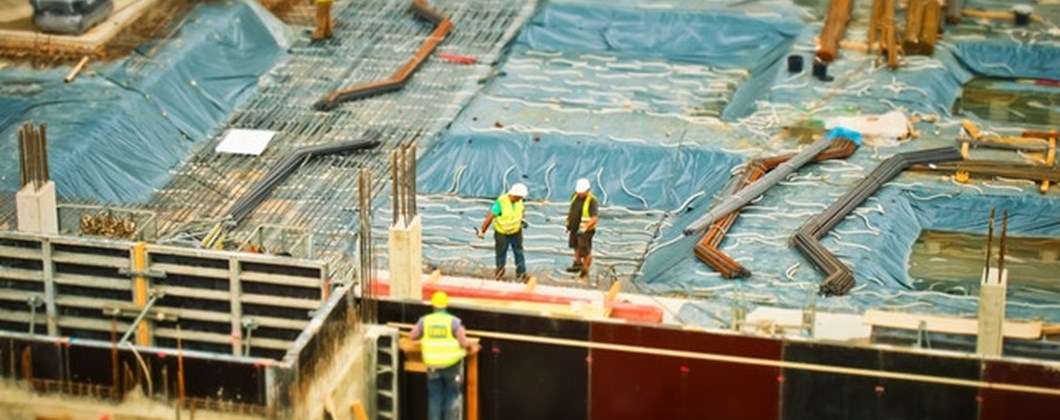Managing Construction Health & Safety to Minimise Fatalities

The construction industry is one of the largest and fastest-growing industries in the UK, but the skill, innovation and superior workmanship that characterises the UK construction industry is sometimes overshadowed by its reputation as one of the most high-risk industries to work in. Managing health and safety in construction is vital. Failing to prioritise Health and Safety can be deadly.
“The rate of fatal injury in the construction sector is four times as high as the average rate across all industries” (HSE)
The HSE’s most recently published workplace fatality figures (2020/21) revealed that there were 39 employee fatalities in the construction sector. These statistics emphasise how vital it is that construction sector businesses take necessary steps to reduce health and safety risks on-site. But what are the risks?
Top 3 Construction Health and Safety Risks
The top causes of work-related deaths in the UK construction industry are:
- Falls from height
- Being struck by a moving vehicle or object
- Coming into contact with moving machinery
How to Manage Common Health and Safety Risks in Construction
Although the risks to health and safety in the construction industry are many, adhering to the following practices can help to reduce incidents and fatalities relating to the most common accident causes mentioned above.
Falls from Height
50% of construction sector deaths over the last five years were related to falls from a height.
Review work procedures and identify opportunities to minimise the amount of work that needs to be done at height. Have employees work from the ground, when possible. If working at height is necessary, ensure workers have a safe method to get to and from their tasks at height. Implement ladder safety best practices and ensure workers wear all the required personal protective equipment (PPE) and safety equipment. Health and safety training for staff is vital to reduce risk and accidents.
Being struck by a moving vehicle or object
Whilst wearing PPE will not fully prevent injury if you are struck by a moving vehicle or object, it can help to lessen the impact and any long-term damage, or fatalities. Stack all materials safely to avoid a sudden fall or collapse. Also ensure that workers who operate vehicles or large items of equipment are properly trained and licensed to do so and receive regular refresher training. Ensure that suitably experienced personnel are on-site to supervise high risk operations and address issues or concerns as they arise.
Contact with machinery
All workers operating machinery should be fully trained in the safe use of each item of equipment. Safeguards should be in place to minimise risk whilst carrying out tasks. Establish a regular machine maintenance schedule to ensure that all equipment is in good working order. Again, proper PPE and staff training are key to minimising accidents relating to contact with machinery and moving parts.
Health and Safety Management Plan
Your Health and Safety Manager is responsible for managing health and safety in the workplace. An operational health and safety policy should detail all activities that construction staff participate in on a day to day basis that could present risk to health and safety. Safe operating procedures should be identified, and regular staff training provided to educate workers on the risks and best practice procedures to avoid injury to themselves and others. Regularly recording and reviewing near-miss reports, incident reports and referencing industry guidelines will also help to ensure that continuous learning and improvement takes place.
Construction Sector Insurance Policies
Whilst an insurance policy cannot save a life, it’s still a vital component of the process of managing health and safety in construction businesses. Industries where workers are at the greatest risk will typically be subject to more incidents and claims. Review your insurance portfolio and ensure that the following policies are in place, with adequate cover and conditions to minimise the risk to your business in the event of a claim:
- Design and Construction Professional Indemnity Insurance
- Environmental Liability Insurance
- Contractors All Risk Insurance
- Product Liability Insurance
- Public Liability Insurance
- Latent Defects Insurance
If you are a construction professional and require support to review and update your insurance policies, contact Executive Director, Ian McClure. Ian has worked in corporate insurance broking for over 25 years and has considerable experience working with construction sector businesses.

Tel: 028 9099 3670
Email: ian.mcclure@ablinsurance.co.uk
You may also be interested in reading:
Rising Design & Construction Professional Indemnity Insurance
How can Your Business Prevent Near Misses Turning into Future Accidents?
